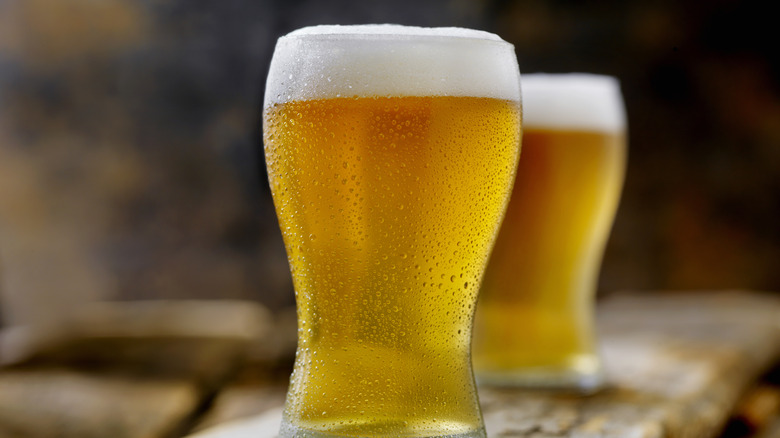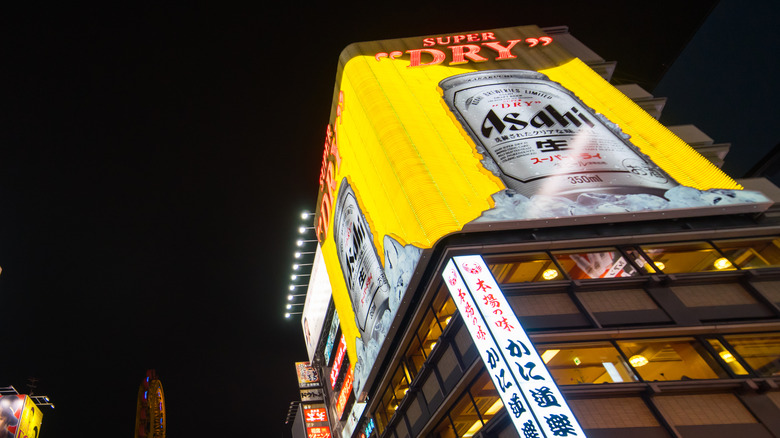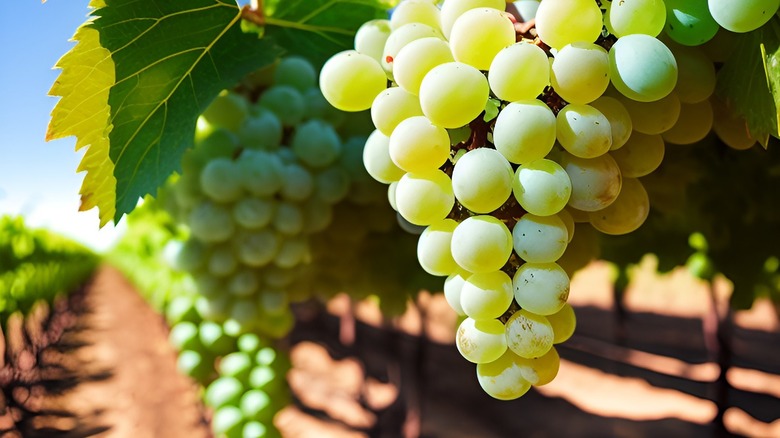What Sets Dry Beer Apart From All The Rest
At first glance, it doesn't make sense to adopt the word "dry" when describing things made mostly from water, like wine and beer. But etymology is weird, and we're just going to have to get on with it. While you've no doubt heard of a dry white wine, the concept of dry beer might be new to you. What does that term mean, exactly? It turns out that what constitutes a dry wine is the same condition that defines a dry beer: a lack of residual sugars, which results in a light body and clean finish. Generally speaking, beers that are considered dry tend to be lagers like Pilsners or hoppy ales like American IPAs. There are also beers that are branded as dry by their brewers.
To get technical about it, a beer or wine is considered dry when it is well-attenuated, that is, when the yeast has done a thorough job of gobbling up all the sugars in the mash and converting them to ethanol and carbon dioxide. This translates to the drinker of the finished product as crispness — a lack of sweetness or an attenuated finish. When it comes to the invention of dry beer, we have the Japanese to thank.
The origin of dry beer
While the term "dry" has been describing wine in one way or another for hundreds of years (more on that bizarre history later), the first dry beer didn't show up until March 1987 with the production rollout of Japan's Asahi Super Dry. According to the company, the idea was inspired by the dryness of sake (and likely bolstered by a stack of consumer research). The result was not only a lager beer designed to accompany food, but also a product that would ultimately become Japan's No. 1 beer.
Unlike the disastrous rollout of New Coke, the novelty that was Asahi Super Dry was immediately embraced, and Japanese brewers like Kirin, Sapporo, and Suntory hurried to follow suit their own versions — kicking off what would become known as Dorai Senso, or "dry wars." Australia also picked up on the trend with some success, but even there (and especially in the United States), dry beer isn't nearly as popular as it remains in its home country of Japan. It makes sense why Asahi would adopt a traditional vintner's term for describing its new product, but where did that strange term "dry" come from, anyway?
A wine by any other name would still be as (un)sweet
The English began calling wines "dry" by the late 17th century, but back then the term bore no resemblance to how the adjective is used today. In the third edition of An Universal Etymological English Dictionary published in 1726, one writer described a dry wine as "that by reason of Age, is pretty well dephlegmated, or has [lost] much of its [waterish] Quality." Okay, then. There were a few other early wine-related terms that also fell out of use — "racy" and "rough" being two that should definitely make a comeback.
Other words preceded "dry" in denoting a lack of sweetness in wine. in addition to "rough," there was "austere," "sharp," and "harsh." Ultimately, "dry" went from an adjective describing a wine that had little moisture to the descriptor of crisp and clean that we know today. (Don't get us started on the French, whose word for dry — "sec" — also means "unsweet" when describing wine, unless you're talking about Champagne, where "sec" means "sweet" and "demi-sec" even sweeter.) At least there's no disagreement about what constitutes a dry beer, a style worth becoming familiar with as responsible beer consumption can be good for your health.


